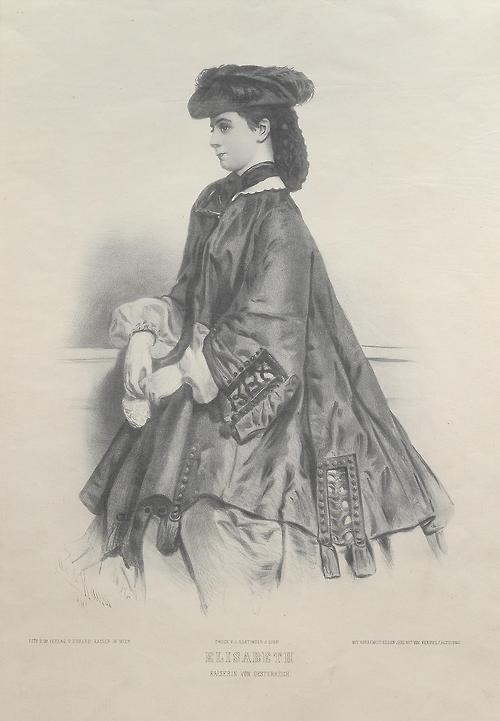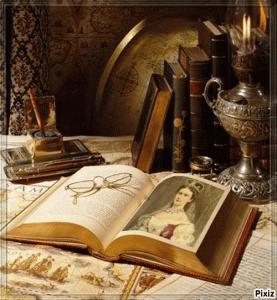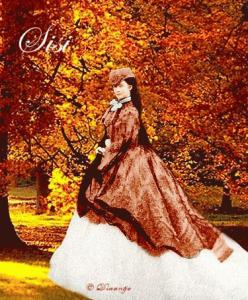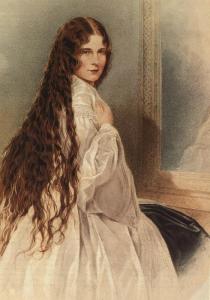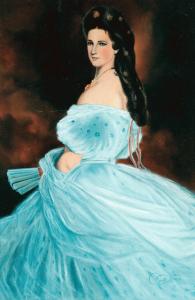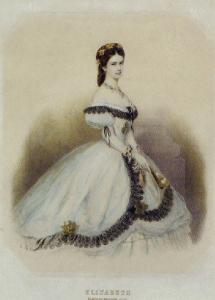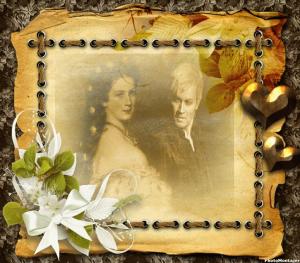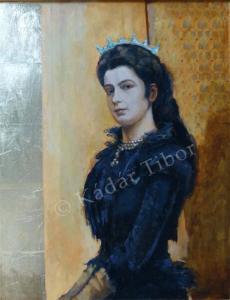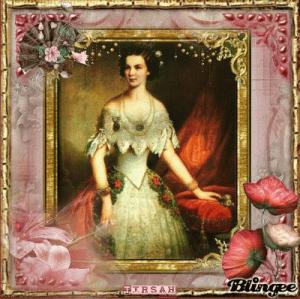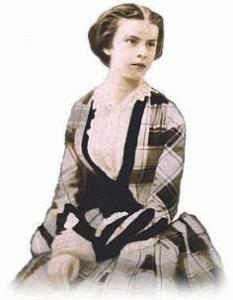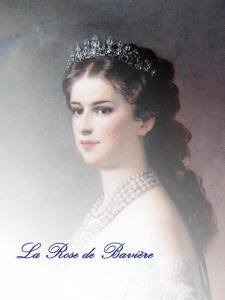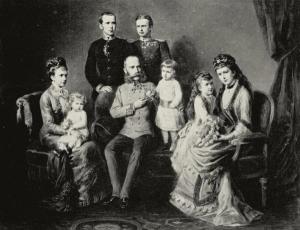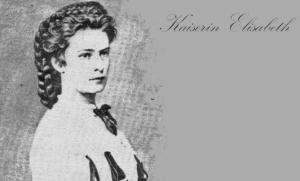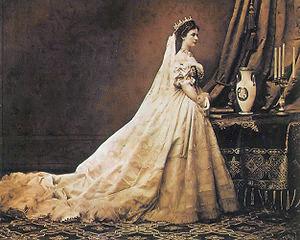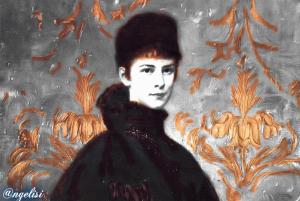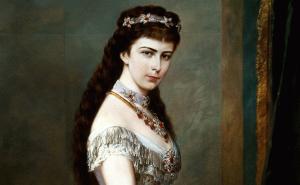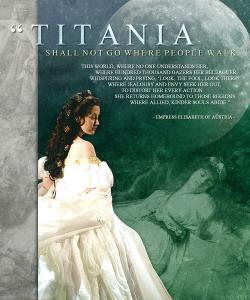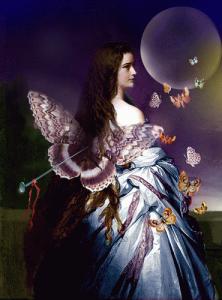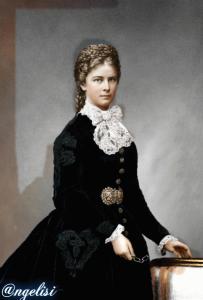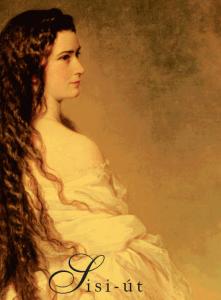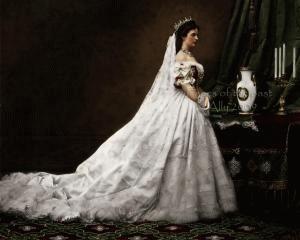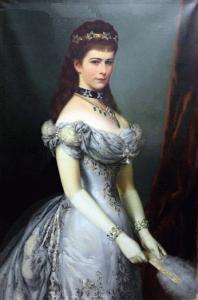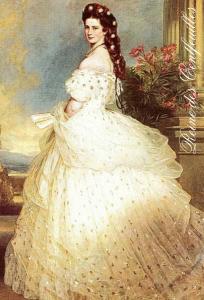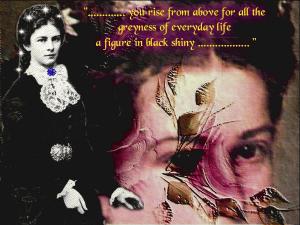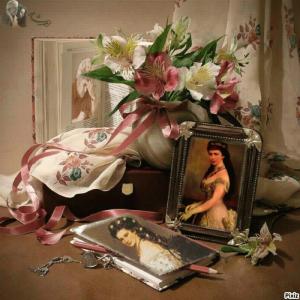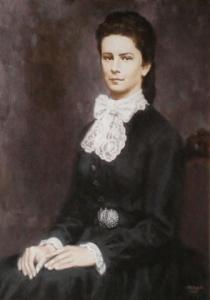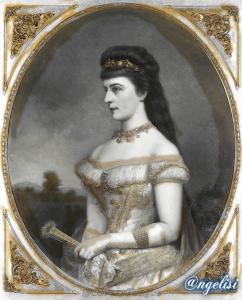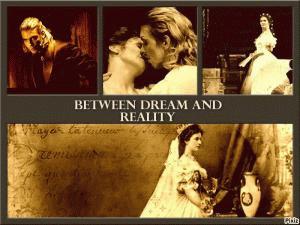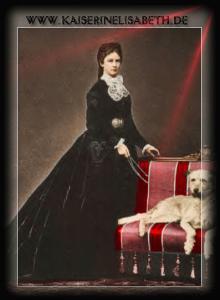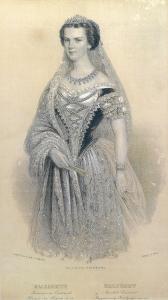The Jewels of the Austrian Empire
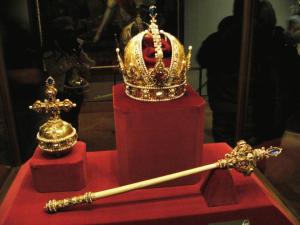
The Jewels of the Austrian Empire
In all European monarchies that draw from the beginning form of reality uninazionali is a group of precious objects owned by the state which is used for the coronation of the Sovereign, and that is handed down from one generation to demonstrate the transfer of power universally recognized the Church and the People. In principle, these objects are: -the Crown the Rod--Globe -Sword. These essential elements are also emblems of temporal power made the sacred anointing church, sometimes, as in the case of England, over time you add other complementary objects, which can be armlets (bracelets), rings, collars, all in gold and precious stones, each of which is invested with particular meanings. In the tenth century , Austria was in the hands of Babemberg form of the Duchy , and from them it passed to the Habsburg Archduke first , then monarchs until 1806 . So , with the union of the crowns of Austria and Hungary , it created the Austro-Hungarian Empire .From the ninth to the sixteenth century, the Crown used in Austria to crown the king (it seems that the coronation liturgy had begun in 960 ) was the so-called "Crown Ottonian ," a crown of medieval buildings , preserved in the Schatzkammer Kunsthistoriches Museum in Vienna .It has eight segments , the four largest - the highest of all is the central front - studded with precious stones , and four smaller ones , alternating with them, on which they are made , multicolored enamel , scenes from the Old Testament . On the front panel central gemstones are twelve , how the Apostles , while in the back are engraved with the names of the twelve tribes of Israel. Inside is also engraved with a prayer that the rulers give thanks to God for a long life and victories over their enemies . This crown is the pride of the Ottonian dynasty that boasts membership of a divine right monarchy .In the sixteenth century, King Rudolf II ordered the construction of the new Crown Jewels , in imitation of those of England.The Austro-Hungarian Empire , heir to the Holy Roman Empire by the will of its own sovereign , retained over time the Crown, the Sceptre , the Orb and Sword , which had belonged to the Austrian monarchy and that, although most times properly restored, are reached almost intact to our times, and can be seen in the Schatzkammer KunsthinstorischeMuseum in Vienna. They are, however, represented in the emblem of the Austrian Empire : the Eagle Bicep, which bears the Crown, the Orb , the Sceptre , the Sword and the collar of the Golden Fleece .Crown , orb, scepter and sword hilt are characteristic of the era in which they were created : the gold is shiny ornaments are in pearls and enamels with some precious stones , including sapphires placed on top of the globe , the scepter and hilt of the sword , apparently coeval . It is precious objects made in the sixteenth century , many of which you know the name of the author.The Crown was made in Prague by a master jeweler well known , Jan Vermeyen , for the Emperor Rudolf II of Hapsburg ruler who reigned from 1576 to 1612 , the year he died, almost crazy, and already in 1594 replaced by his brother Matthias ruled in his place as regent . In the early years of the reign of Rudolf II had shown a particular tendency to appreciate the beautiful in art, and , even when his mind had not been attacked by the terrible disease of insanity, he was one of the first sovereigns who had cultivated in his time the taste of collecting special items , unique and rare or for which there was only one specimen , found in nature or produced by skillful interpretations of the jewelers of the time, but also by painters or sculptors who created the design and then avail themselves of ' work of the famous goldsmiths to make them realize gold , pearls often baroque - and - precious stones such as spinel - raw for a long time considered a ruby - that adorns the front of the Crown.Rudolph II , as Ferdinand of Tyrol and Francesco I de ' Medici, was one of the first rulers to collect beautiful objects in their own Wunderkammer or bizarre , unique and refined collected or brought in from far away places of the Earth, alternating the " natural products " to " artificialia . " For a teacher of Prague, Andreas Osenbruck , you should instead Orb and Sceptre , decorated with enamels, precious stones such as rubies, sapphires , diamonds and bearing carrés , pearls, and surmounted by an oval sapphire both .Insignia of investiture was also part of the imperial mantle , which is also in the Schatzkammer .An emblematic image of the insignia of the endowment can be considered the painting depicting the Kaiser Franz I (1768/1835) in the day of his consecration . In the picture are all the elements mentioned above, and also the collar of the Golden Fleece . The Collar of the Golden Fleece The Golden Fleece was an award - the maximum that could be assigned to the monarchs and the Grand Master of the Sovereign Order of Malta - instituted January 10, 1429 by Philip the Good, Duke of Burgundy on the occasion of his marriage to Isabella of Portugal. It consisted of a pendant of gold, which you could hang on a chain or a collar , which represented the mythical Golden Fleece , the same as the Argonauts had tried to help Jason to get his kingdom , according to Greek Mythology . This honor was granted to the sovereign , rehearsed together and based on the criteria of brotherhood and mutual solidarity , defending the Christian religion extolling the Cavalry . And as it was said that the Argonauts were fifty , so the sovereign awarded the Order of the Golden Fleece could not be more than many , and only if someone was dying another could be called to fill his place. The Order had its parallel in the assumptions that are instituted between the mythical search for the Golden Fleece and the Holy Grail . The Duke of Burgundy had therefore chosen a pagan myth to illustrate a Christian Order .The Austrian Emperors were hereditarily awarded the Golden Fleece that was imposed on them at the time of the coronation .Women, too , as a sovereign state not - necessarily - queens or empresses were awarded the Golden Fleece. Other jewelery linked to the imperial office were worn by the Emperors of Austria, including those of the so-called Crown of St. Stephen , which is the crown jewels of Hungary , during the unification of the two kingdoms of Austria and Hungary that gave rise to the Austro -Hungarian Empire.
From the site: http://http://www.unarosadoro.com/gioielliimperoaustria.html

Otto and Regina von Habsburg at their golden wedding anniversary during the celebration in Nancy, France on Mai 10th 2001.

Empress Zita in her 95th Anniversary of her Birthday with her with his eldest son Otto and his wife, the other children and wives; grandchildren
Habsburg Wedding in Bad Ischl : Magdalena Habsburg-Lothringen and Sebastian Bergmann
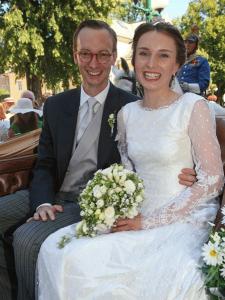
Habsburg wedding shows: Bad Ischl lives well by the Emperor
BAD ISCHL. In the imperial town of Bad Ischl married on Saturday Magdalena Habsburg-Lothringen her fiancé Sebastian Bergmann. A sentiment report shows: The Ischler know how much they owe to the Emperor Franz Joseph.
Habsburgs in Bad Ischl: Today Magdalena Habsburg-Lothringen and Sebastian Bergmann married. The loyalty to the Emperor of the people in Bad Ischl is legendary - but it has solid reasons.
The Austrian Social Democrats implemented in 1919 by the abolition of titles of nobility. Nevertheless, Markus Habsburg-Lothringen (68), great-grandson of the emperor and owner of the Imperial Villa in Bad Ischl consistently dubbed the "Archduke". Also of SP-Mayor Hannes Heide. The fact that on the birthday of the Emperor Franz Joseph I annually anthem is sung at Mass in the parish church, also understands Republic of itself or not.
In the Salzkammergut Bad Ischl are often denigrated because of these quirks as the "Kaiser-ass". But they are as loyal to the House of Habsburg actually arise?
Ischl owes much to the Emperor
First of all: Monarchist efforts there are not at the headwaters of the River Traun. They would also never have been possible in the rebellious Salzkammergut.
But know the Ischler how much they owe Emperor Franz Joseph. The monarch has its small town transformed by his annual visits to a sophisticated imperial metropolis. In the slipstream of the Emperor came aristocracy, upper middle class and Jewish intelligence and expressed their mark on the place. You can see it Bad Ischl to this day, and that can be touristy still wonderful marketable.
Around 360,000 overnight stays recorded the city annually. More than 50,000 visitors are counted per season Alone in the Imperial Villa. "90 percent of my passengers want to Imperial Villa," says Andreas Hödlmoser, horse-drawn carriage in downtown. From the tensile force of the emperor but not only benefited the tourism itself, but the entire business location. Every third euro that flow to the flourishing retail trade in the Ischler downtown, is from a holiday.
As such, it is understandable that the ratio of the Ischler to the house of Habsburg is less influenced by emotions than by business sense. However, what is true for both sides. "We work closely with the Habsburg family," says mayor Heide. "The Imperial Villa and the Emperor Park will play central functions, for example, at the State Garden Show next year. Benefit even run both sides."
Your most magnificent monument not dedicated Ischler the way to the Emperor, but Dr. Franz Wirer. The Viennese physician, who, in the early 19th century convinced the imperial family from the healing effect of the Ischler brine water. The Carpenter have him be eternally grateful.
Wedding in Bad Ischl
Today, 14 clock, married Magdalena Habsburg-Lothringen (great-granddaughter of Emperor Franz Joseph) and Sebastian Bergmann. The wedding ceremony takes place in the parish church of St. Nicholas in Bad Ischl. At 13.45 clock the bridal couple is expected. After the ceremony we go with the carriage to the Imperial Villa.
The Hungarian branch of Habsburg
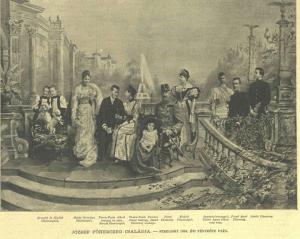
The Hungarian branch of Habsburg
After the departure of the Ottomans, the Austrians dominated the Hungarian Kingdom. The Hungarians' renewed desire for an independent Hungary brought about Rákóczi's War for Independence. On of the most important reasons for the war were new and higher taxes. Francis II Rákóczi was a Hungarian noble, son of Ilona Zrínyi the legendary heroine and regent of Transylvania who led a three year anti-Austrian rebellion (Molnár 2001, 131). Rákóczi spent part of his youth in Austrian captivity. His troops were called the Kurucs, or crusaders. Initially, the Kuruc army attained several important victories due to their superior skilled light cavalry. Their weapons were mostly pistols, light saber and fokos (axes). At the Battle of Saint Gotthard (1705), Kuruc general János Bottyán decisively defeated the Austrian army. The famous Hungarian colonel Ádám Balogh nearly captured the Emperor of Austria. In 1708, the Habsburgs finally defeated the main Hungarian army at Battle of Trencin. This weakened the effectiveness of the Kuruc army. While the Hungarians were exhausted by the fighting, the Austrians defeated the French army in the War of the Spanish Succession then sent more and more troops to Hungary against the rebels from West.
The next ruler of Hungary was the Austrian Emperor Charles VI, who settled numerous Vlach ethnic groups in Transylvania. From this time on, the designation Royal Hungary was abandoned, and the area was once again referred to as the Kingdom of Hungary. Throughout the eighteenth century, the Kingdom of Hungary had its own Diet (parliament) and constitution, but the members of the Governor's Council (Helytartótanács, the office of the palatine were appointed by the Habsburg monarch, and the superior economic institution, the Hungarian Chamber, was directly subordinated to the Court Chamber in Vienna. The Hungarian Language reform started under reign of Joseph II. The reform age of Hungary was initiated by István Széchenyi a Hungarian count, who built one of the greatest bridges of Hungary the Széchenyi Chain Bridge, founded the Hungarian Academy of Sciences which he also financed.
The official language of the Kingdom of Hungary remained Latin until 1844. Then, between 1844 and 1849, and from 1867, Hungarian became the official language.
The European revolutions of 1848 swept Hungary as well. The Hungarian Revolution of 1848 sought to redress the long suppressed desire for political change, namely independence. The Hungarian National Guard was created by young Hungarian patriots in 1848. In literature, this was best expressed by the greatest poet of the Revolution, Sándor Petőfi. One of the most famous battles was on September 29, 1848, at the Battle of Pákozd. When Serbs attacked the Hungarians in the South, a great general called Ernő Kiss stopped three Serbian regiments with only 72 hussars.
As war broke out with Austria, Hungarian military successes, which included the brilliant campaigns of the great Hungarian general, Artúr Görgey, forced the Austrians on the defensive. Fearing defeat, the Austrians pleaded for Russian help, which, combined with Austrian forces, quelled the revolution. The desired political changes of 1848 were again suppressed until the Austro-Hungarian Compromise of 1867.
Austria-Hungary
Following the Austro-Hungarian Compromise of 1867, the Habsburg Empire became the "dual monarchy" of Austria-Hungary, often referred to as the Austro-Hungarian Empire.
The Austro-Hungarian economy changed dramatically during the existence of the dual monarchy. Technological change accelerated industrialization and urbanization. The capitalist way of production spread throughout the Empire during its fifty-year existence and obsolete medieval institutions continued to disappear. By the early twentieth century, most of the Empire began to experience rapid economic growth. The GNP per capita grew roughly 1.45 percent per year from 1870 to 1913. That level of growth compared very favorably to that of other European nations such as Britain (1.00 percent), France (1.06 percent), and Germany (1.51 percent).
The historic lands of the Hungarian Crown (the Kingdom of Hungary proper, to which Transylvania was soon incorporated, and Croatia-Slavonia, which maintained a distinct identity and a certain internal autonomy), was granted equal status with the rest of the Habsburg monarchy. Each of the two states comprising Austria-Hungary exercised considerable independence, with certain institutions, notably the reigning house, defense, foreign affairs, and finances for common expenditures, remained under joint management. This arrangement lasted until 1918, when the Central Powers were defeated in World War I.
The new borders set in 1920 by the Treaty of Trianon, ceded 72 percent of the historically Hungarian territory of the Kingdom of Hungary to the neighboring states. The beneficiaries were Romania, and the newly formed states of Czechoslovakia and the Kingdom of Serbs, Croats and Slovenes. This left millions of ethnic Hungarians outside the new borders, contrary to the terms laid out by United States President Woodrow Wilson's Fourteen Points, which had honored the ethnic makeup of the territories.
Kingdom of Hungary between 1920-1944
After the pullout of occupation forces in 1920, the country went into civil conflict, with Hungarian anti-communists and monarchists purging the nation of communists, leftists and of others they thought represented a threat. Later in 1920, a coalition of right-wing political forces united, and reinstated Hungary's status as a constitutional monarchy. Selection of the new King was delayed due to civil infighting, and a regent was appointed to represent the monarchy, former Austro-Hungarian navy admiral Miklós Horthy.
The Kingdom of Hungary, which existed from 1920 to 1944, was a de facto regency under Regent Miklós Horthy, who officially represented the abdicated Hungarian monarchy. Attempts by Charles IV King of Hungary (Charles I of Austria, the last Habsburg, to return to the throne, were prevented by threats of war from neighboring countries, and by lack of support from Horthy.
The post-World War I Hungarian state was conceived of as a "kingdom without a king," since there was no consensus on either who should take the throne of Hungary, or what form of government should replace the monarchy. The first ten years of this reinstated kingdom saw increased repression of the Hungarian minorities, uncharacteristic of Hungary's historical legacy. Limits on the number of Jews permitted to go to university were placed, and corporal punishment was legalized. Under the leadership of Prime Minister István Bethlen, democracy dissipated as Bethlen manipulated elections in rural areas which allowed his political party, the Party of Unity to win elections repeatedly. Bethlen pushed for the revision of the Treaty of Trianon, but after the collapse of the Hungarian economy between 1929 to 1931, the national uproar pushed Bethlen to resign. When Gyula Gömbös became Prime Minister in 1932, he allied Hungary with Germany. He was the first head of government to visit Adolf Hitler following Hitler's rise to power. Gömbös introduced anti-Jewish legislation and took Hungary into World War II on the side of the Axis Powers.
In 1944, Horthy appointed an anti-fascist Prime Minister who attempted a defection to the Allied powers. However, the Hungarian army ignored an armistice signed on October 15, 1944 with the Soviets and continued to fight. This resulted in Hungary being occupied and dissolved by Nazi Germany, and replaced by a briefly-existing puppet state. In January 1955, the Soviets entered and occupied Hungary. By 1949 a Soviet-satellite state, the People's Republic of Hungary, had been established. However, during 1956 a revolt took place in favor of democracy and freedom which was crushed when the Soviet sent troops into Hungary. When the Soviet-bloc collapsed in 1989, the democratic Republic of Hungary replaced the communist state. The Republic of Hungary joined the European Union in 2004.
Legacy
In today's Hungary, the Kingdom of Hungary is regarded as one long stage in the development of the state. This sense of continuity is reflected in the republic's national symbols, holidays, official language, and the capital city of the country and in the short form of the country's name in Hungarian, (Magyarország) the same. The millennium of the Hungarian statehood was commemorated in 2000, and codified by the Millennium Act of 2000.
One significant legacy of the Kingdom of Hungary that continues to impact the modern nation-state of Hungary is that Hungary is a bridge between East and West while "International migration has played a crucial role in Hungary's history since its foundation as a state in the 10th century." A key feature of Hungary is that it is "a sending, transit, and destination country for migration." Judit Juhász comments:
Hungary's special characteristics are rooted in this history of fluid borders, as well as the strong migratory tendencies of people of Hungarian ancestry who are citizens of neighboring countries. Today, mainly as a result of these factors, roughly three million ethnic Hungarians live in nearby countries. The country's geographical location, which has placed it in the path of important European events, is also key. Moreover, the current nature of Hungary's economy and society, which are in transition, offers special opportunities to migrants, especially those from eastern Europe.[1]
Although during the period of Habsburg domination many Hungarians of Magyar descent resented what amounted to a Germanization process and despite the anti-Jewish measures introduced under the Fascists, Hungary has a proud and long history of recognizing all who are loyal to the state as Hungarian, regardless of ethnicity. Even during the Soviet period, Hungary maintained a Jewish seminary, the only one East of the Berlin Wall.[2] Situated on the border of East and West, the Hungarian space seen occupation, invasion, foreign rule and civilizational conflict. Yet, Hungary has also served as a cultural bridge, often maintaining relations with both the East and the West. Hungarians have almost always refused to divide the world into "us" and "them" with the former representing good and the latter evil. Hungarians have tended to see humanity as one family, favoring cooperation and unity over conflict, even though their sensitive geo-political location has seen a great deal of the latter.
from site : http://www.newworldencyclopedia.org/entry/Kingdom_of_Hungary
Rudolf I the first Emperor
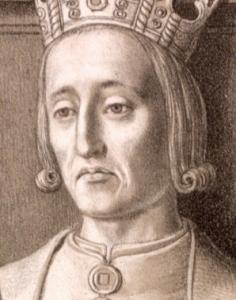
Rudolf I the first Emperor
Rudolf I (also known as Rudolf of Habsburg) (German: Rudolf von Habsburg, Latin: Rudolphus, Czech: Rudolf Habsburský) (1 May 1218 – 15 July 1291) was King of the Romans from 1273 until his death. Rudolf was the first of the count-kings, so-called by the historian Bernd Schneidmüller.
He played a vital role in raising the Habsburg dynasty to a leading position among the Imperial feudal dynasties. Originally a Swabian count, he was the first Habsburg to acquire the duchies of Austria and Styria, territories that would remain under Habsburg rule for more than 600 years and would form the core of the Habsburg Monarchy and the present-day country of Austria.
Early life
Rudolf was the son of Count Albert IV of Habsburg and Hedwig, daughter of Count Ulrich of Kyburg, and was born at Limburg Castle near Sasbach am Kaiserstuhl in the Breisgau region. At his father's death in 1239, he inherited large estates from him around the ancestral seat of Habsburg Castle in the Aargau region of present-day Switzerland as well as in Alsace. In 1245 Rudolf married Gertrude, daughter of Count Burkhard III of Hohenberg. As a result, he became an important vassal in Swabia, the former Alemannic German stem duchy.
Rudolf paid frequent visits to the court of his godfather, the Hohenstaufen emperor Frederick II, and his loyalty to Frederick and his son, King Conrad IV of Germany, was richly rewarded by grants of land. In 1254, he was excommunicated by Pope Innocent IV as a supporter of King Conrad, due to ongoing political conflicts between the Emperor, who held the Kingdom of Sicily and wanted to reestablish his power in the Imperial Kingdom of Italy, especially in the Lombardy region, and the Papacy, whose States lay in between and feared being overpowered by the Emperor.
Rise to power
The disorder in Germany during the interregnum after the fall of the Hohenstaufen dynasty afforded an opportunity for Count Rudolf to increase his possessions. His wife was a Hohenberg heiress; and on the death of his childless maternal uncle, Count Hartmann IV of Kyburg in 1264, he also seized his valuable estates. Successful feuds with the Bishops of Strasbourg and Basel further augmented his wealth and reputation, including rights over various tracts of land that he purchased from abbots and others.
These various sources of wealth and influence rendered Rudolf the most powerful prince and noble in southwestern Germany (where the tribal Duchy of Swabia had disintegrated, leaving room for its vassals to become quite independent) when, in the autumn of 1273, the prince-electors met to choose a king after Richard of Cornwall had died in England in April 1272. Rudolf's election in Frankfurt on 1 October 1273,[1] when he was 55 years old, was largely due to the efforts of his brother-in-law, the Hohenzollern burgrave Frederick III of Nuremberg. The support of Duke Albert II of Saxony and Elector Palatine Louis II had been purchased by betrothing them to two of Rudolf's daughters.
As a result, within the electoral college, King Ottokar II of Bohemia (1230–1278), himself a candidate for the throne and related to the late Hohenstaufen king Philip of Swabia (being the son of the eldest surviving daughter), was almost alone in opposing Rudolf. Other candidates were Prince Siegfried I of Anhalt and Margrave Frederick I of Meissen (1257–1323), a young grandson of the excommunicated Emperor Frederick II, who however did not yet even have a principality of his own as his father still lived. By the admission of Duke Henry XIII of Lower Bavaria instead of the King of Bohemia as 7th elector,[2] Rudolf gained all seven votes.
King of Germany
Rudolf was crowned in Aachen Cathedral on 24 October 1273. To win the approbation of the Pope, Rudolf renounced all imperial rights in Rome, the papal territory, and Sicily, and promised to lead a new crusade. Pope Gregory X, in spite of Ottokar II of Bohemia's protests, not only recognised Rudolf himself, but persuaded King Alfonso X of Castile (another grandson of Philip of Swabia), who had been chosen German (anti-)king in 1257 as the successor to Count William II of Holland, to do the same. Thus, Rudolf surpassed the two heirs of the Hohenstaufen dynasty that he had earlier served so loyally.
In November 1274 it was decided by the Imperial Diet at Nuremberg that all crown estates seized since the death of the Emperor Frederick II must be restored, and that King Ottokar II must answer to the Diet for not recognising the new king. Ottokar refused to appear or to restore the duchies of Austria, Styria and Carinthia with the March of Carniola, which he had claimed through his first wife, a Babenberg heiress, and which he had seized while disputing them with another Babenberg heir, Margrave Hermann VI of Baden. Rudolf refuted Ottokar's succession to the Babenberg patrimony, declaring that the provinces reverted to the Imperial crown due to the lack of male-line heirs (a position that however conflicted with the provisions of the Austrian Privilegium Minus). King Ottokar was placed under the imperial ban; and in June 1276 war was declared against him.
Having persuaded Ottokar's former ally Duke Henry XIII of Lower Bavaria to switch sides, Rudolf compelled the Bohemian king to cede the four provinces to the control of the royal administration in November 1276. Rudolf then re-invested Ottokar with the Kingdom of Bohemia, betrothed one of his daughters to Ottokar's son Wenceslaus II, and made a triumphal entry into Vienna. Ottokar, however, raised questions about the execution of the treaty, made an alliance with some Piast chiefs of Poland, and procured the support of several German princes, again including Henry XIII of Lower Bavaria. To meet this coalition, Rudolf formed an alliance with King Ladislaus IV of Hungary and gave additional privileges to the Vienna citizens. On 26 August 1278, the rival armies met at the Battle on the Marchfeld, where Ottokar was defeated and killed. The March of Moravia was subdued and its government entrusted to Rudolf's representatives, leaving Ottokar's widow Kunigunda of Slavonia, in control of only the province surrounding Prague, while the young Wenceslaus II was again betrothed to Rudolf's youngest daughter Judith.
Rudolf's attention next turned to the possessions in Austria and the adjacent provinces, which were taken into the royal domain. He spent several years establishing his authority there but found some difficulty in establishing his family as successors to the rule of those provinces. At length the hostility of the princes was overcome. In December 1282, in Augsburg, Rudolf invested his sons, Albert and Rudolf II, with the duchies of Austria and Styria and so laid the foundation of the House of Habsburg. Additionally, he made the twelve-year-old Rudolf Duke of Swabia, a merely titular dignity, as the duchy had been without an actual ruler since Conradin's execution.[citation needed] The 27-year-old Duke Albert, married since 1274 to a daughter of Count Meinhard II of Gorizia-Tyrol (1238–95), was capable enough to hold some sway in the new patrimony.
In 1286 King Rudolf fully invested the Duchy of Carinthia, one of the provinces conquered from Ottokar, to Albert's father-in-law Count Meinhard. The Princes of the Empire did not allow Rudolf to give everything that was recovered to the royal domain to his own sons, and his allies needed their rewards too. Turning to the west, in 1281 he compelled Count Philip I of Savoy to cede some territory to him, then forced the citizens of Bern to pay the tribute that they had been refusing, and in 1289 marched against Count Philip's successor, Otto IV, compelling him to do homage.
In 1281 Rudolf's first wife died. On 5 February 1284, he married Isabella, daughter of Duke Hugh IV of Burgundy, the Empire's western neighbor in the Kingdom of France.
Rudolf was not very successful in restoring internal peace. Orders were indeed issued for the establishment of landpeaces in Bavaria, Franconia and Swabia, and afterwards for the whole Empire. But the king lacked the power, resources, or determination, to enforce them, although in December 1289 he led an expedition into Thuringia where he destroyed a number of robber-castles. In 1291, he attempted to secure the election of his son Albert as German king. However, the electors refused claiming inability to support two kings, but in reality, perhaps, wary of the increasing power of the House of Habsburg. Upon Rudolf's death they elected Count Adolf of Nassau.
Death
Rudolf died in Speyer on 15 July 1291, and was buried in the Speyer Cathedral. Although he had a large family, he was survived by only one son, Albert, afterwards the German king Albert I. Most of his daughters outlived him, apart from Katharina who had died in 1282 during childbirth and Hedwig who had died in 1285/6.
Rudolf's reign is most memorable for his establishment of the House of Habsburg as a powerful dynasty in the southeastern parts of the realm. In the other territories, the centuries-long decline of the Imperial authority since the days of the Investiture Controversy continued, and the princes were largely left to their own devices.
In the Divine Comedy, Dante finds Rudolf sitting outside the gates of Purgatory with his contemporaries, and berates him as "he who neglected that which he ought to have done".
Family and children
Rudolf was married twice. First, in 1245, to Gertrude of Hohenberg and second, in 1284, to Isabelle of Burgundy, daughter of Hugh IV, Duke of Burgundy. All children were from the first marriage.
Matilda (ca. 1251/53, Rheinfelden – 23 December 1304, Munich), married 1273 in Aachen to Louis II, Duke of Bavaria and became mother of Rudolf I, Count Palatine of the Rhine and Louis IV, Holy Roman Emperor.
Albert I of Germany (July 1255 – 1 May 1308), Duke of Austria and also of Styria.
Katharina (1256 – 4 April 1282, Landshut), married 1279 in Vienna to Otto III, Duke of Bavaria who later (after her death) became the disputed King Bela V of Hungary and left no surviving issue.
Agnes (ca. 1257 – 11 October 1322, Wittenberg), married 1273 to Albert II, Duke of Saxony and became the mother of Rudolf I, Duke of Saxe-Wittenberg.
Hedwig (d. 1285/86), married 1270 in Vienna to Otto VI, Margrave of Brandenburg-Salzwedel and left no issue.
Clementia (ca. 1262 – after 7 February 1293), married 1281 in Vienna to Charles Martel of Anjou, the Papal claimant to the throne of Hungary and mother of king Charles I of Hungary, as well as of queen Clementia of France, herself the mother of the baby king John I of France.
Hartmann (1263, Rheinfelden – 21 December 1281), drowned in Rheinau[disambiguation needed].
Rudolf II, Duke of Austria and Styria (1270 – 10 May 1290, Prague), titular Duke of Swabia, father of John the Patricide of Austria.
Guta (Jutte/Bona) (13 March 1271 – 18 June 1297, Prague), married 24 January 1285 to King Wenceslaus II of Bohemia and became the mother of king Wenceslaus III of Bohemia, Poland and Hungary, of queen Anne of Bohemia (1290–1313), duchess of Carinthia, and of queen Elisabeth of Bohemia (1292–1330), countess of Luxembourg.
Charles (1276–1276)
Rudolf's last agnatic descendant was Maria Theresa, Holy Roman Empress (1717–1780), by Albert I of Germany's fourth son Albert II, Duke of Austria.
From site : http://en.wikipedia.org/wiki/Rudolf_I_of_Germany
the Habsburgs last period of the rule
The failed Emperor of Mexico
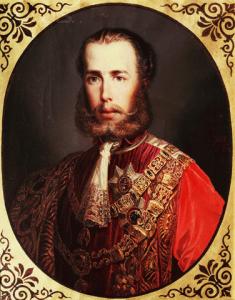
The failed Emperor of Mexico
Ay dios mio! A Habsburg left Europe to become emperor in Mexico, but it didn’t end muy bien for him.
We are well, thank God, and are becoming more and more accustomed to the local situation and way of life. There is an enormous amount of work to be done, but one does it gladly because one sees that it is appreciated with gratitude. For the moment there can be no talk of constitutional experiments. The good people must first learn to obey before they can be allowed a say in politics. I am trying to proceed calmly and to avoid acting rashly.
— Maximilian in a letter of 10 July 1864 A Habsburg empire in America? Yes, there was such a thing, albeit for only a few years. When in 1863 Emperor Napoleon III offered Franz Joseph’s younger brother Archduke Ferdinand Maximilian the chance to become Emperor of Mexico, the ambitious archduke found it an attractive prospect. However, what he was not in a position to know was that the throne was only being offered him on behalf of a small minority of clerical-conservative Mexicans supported by French troops of occupation. When Maximilian arrived in 1864, he was proclaimed Emperor of Mexico in the face of great popular resistance.
His vision of being welcomed to Mexico by jubilant crowds was to remain an unfulfilled dream – on the contrary, he found himself confronted with a lawfully instituted republican government embroiled in a civil war. This explains why two Mexican flags were used at that time: the republican flag, which is similar to the present-day version, and the imperial flag with a crowned eagle as a symbol of the empire. French withdrawal from Mexico spelled Maximilian’s end: in 1867, as the representatives of unsuccessful French power politics, he and two of his generals were condemned to death by a court martial and shot. However, there were rumours that the short-term Emperor of Mexico was not in fact executed but lived on in El Salvador under the name Justo Armas.
The brief interlude during which Maximilian was Emperor of Mexico was based on an entirely erroneous assessment of international interests and power constellations in America. In order to take part in the experiment, he not only had to renounce all claims to power in Austria but also became the victim of French interference in Mexico’s internal affairs. Maximilian is still commemorated in a statue erected in front of Hietzing parish church by the palace gardens at Schönbrunn shortly after his execution. He had built himself a villa nearby, in the street later named the Maxingstrasse in his memory.
It remains to be noted that Maximilian was not the only Habsburg to have ended up in American for ‘professional’ reasons: an archduchess named Leopoldine became Empress of Brazil.
Stephan Gruber
From site : http://www.habsburger.net/de/node/7263
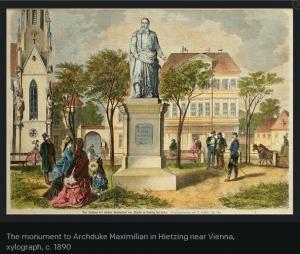
The failed Emperor of Mexico
Ay dios mio! A Habsburg left Europe to become emperor in Mexico, but it didn’t end muy bien for him.
We are well, thank God, and are becoming more and more accustomed to the local situation and way of life. There is an enormous amount of work to be done, but one does it gladly because one sees that it is appreciated with gratitude. For the moment there can be no talk of constitutional experiments. The good people must first learn to obey before they can be allowed a say in politics. I am trying to proceed calmly and to avoid acting rashly.
— Maximilian in a letter of 10 July 1864 A Habsburg empire in America? Yes, there was such a thing, albeit for only a few years. When in 1863 Emperor Napoleon III offered Franz Joseph’s younger brother Archduke Ferdinand Maximilian the chance to become Emperor of Mexico, the ambitious archduke found it an attractive prospect. However, what he was not in a position to know was that the throne was only being offered him on behalf of a small minority of clerical-conservative Mexicans supported by French troops of occupation. When Maximilian arrived in 1864, he was proclaimed Emperor of Mexico in the face of great popular resistance.
His vision of being welcomed to Mexico by jubilant crowds was to remain an unfulfilled dream – on the contrary, he found himself confronted with a lawfully instituted republican government embroiled in a civil war. This explains why two Mexican flags were used at that time: the republican flag, which is similar to the present-day version, and the imperial flag with a crowned eagle as a symbol of the empire. French withdrawal from Mexico spelled Maximilian’s end: in 1867, as the representatives of unsuccessful French power politics, he and two of his generals were condemned to death by a court martial and shot. However, there were rumours that the short-term Emperor of Mexico was not in fact executed but lived on in El Salvador under the name Justo Armas.
The brief interlude during which Maximilian was Emperor of Mexico was based on an entirely erroneous assessment of international interests and power constellations in America. In order to take part in the experiment, he not only had to renounce all claims to power in Austria but also became the victim of French interference in Mexico’s internal affairs. Maximilian is still commemorated in a statue erected in front of Hietzing parish church by the palace gardens at Schönbrunn shortly after his execution. He had built himself a villa nearby, in the street later named the Maxingstrasse in his memory.
It remains to be noted that Maximilian was not the only Habsburg to have ended up in American for ‘professional’ reasons: an archduchess named Leopoldine became Empress of Brazil.
Stephan Gruber
From site : http://www.habsburger.net/de/node/7263
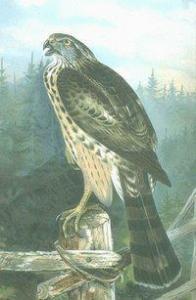
THE HOUSE OF HABSBURGS ......... where homeless goshawk .
BACKGROUND: It seems to me that now is the momeno albeit certainly not a historian but rather by professional shall amateur admirer we try to trace the origins and the history of this family is very important for European history ..... beyond that was the lineage of the husband of Elizabeth Duchess in Bavaria, Empress of Austria as well. This noble family involved, become once very powerful, and sometimes decided the fate of Europe ...... overwhelmed by the times changed cmq in slow agony of the branch that ruled Austria as well as the foundations were laid the foundation pe ril our world is with regard to the culura, science, medicine, philosophy, etc. .......... Come to think of it seems a paradox that statement because if the last Emperor Franz Joseph locked himself inside the world just did not want to recognize and adapt to the changes that took place, however, without his consent ........... ...... the fact remains that in this melting pot of Death of a world that had had its day and the difficult birth of what was coming at the end of the origins of our company laid their roots in the distant time. (End of the introduction)
THE HOUSE HABSBURGS: The origins ........... where has the house goshawk (from Wikipedia encyclopedia) The House of Habsburg (or Hapsburg Hapsburg or Habsburg Italianization from the German), it is one of the oldest and most important royal houses in Europe. Its members were rulers in Austria as the Dukes (1282-1453), Archduke (1453-1804) and emperors (1804-1918), King of Spain (1516-1700), King of Portugal (1580-1640), and for many centuries the emperors of the Holy Roman Empire (from 1273 to 1291 and from 1298 to 1308, and finally, uninterruptedly, 1438 to 1806). The motto of the dynasty is usually interpreted as AEIOU Austriae east reign orbi universe ("it to Austria to rule the world"). The name comes from Habichtsburg (the "Castle dell'Astore"), Switzerland, which was the seat of the family in the twelfth and thirteenth centuries
ORIGINS The question of the origins of the dynasty is somewhat controversial, since, given its antiquity, is lost in the mists of time and its safe reconstruction is difficult. Nevertheless, with some now as founder of Alsace, Count Guntram the Rich, his ancestors are considered the safest Eticonidi, a powerful dynasty of Merovingian strain, descended from Eticone of Alsace. In support of this thesis, we have the actual possession of various estates in Alsace by the family until the seventeenth century and the almost certain identification of "Guntram dives", a vassal of Otto I and descendant of Eticone with Guntram the Rich, the Acta Murensia
GUTRAM THE RICH Guntram the Rich, German Guntram der Reiche (... - 26 March 973), should have been, according to the family tree compiled in 1160 and contained in the Acta Murensia, the founder of the house of Hapsburg. A native of Alsace, Count of Breisgau and Guntram was the Duke of Muri. It is believed that he was the grandfather of Radbot of Habsburg, the builder of the castle of Habsburg, from which the dynasty is named. The tradition also names a son Guntram, Lanzellino, however, the link between the rich and Guntram Lanzelin is not historically proven: it existed in fact a son named "Kanzelin", but it is uncertain whether these and Lanzellino (also called Landolt) were the same person or not. Guntram was the third son of Hugh, Count of Alsace northern and Hildegard. Belonged to the family of Alsatian Eberharde, a branch of the Etichonen. The domains were in Alsace and Breisgau, before they were stolen, along with the title of count, for high treason. If the bond between him and Lanzellino is true, he is the direct ancestor of the present royal family in Belgium, Denmark, the United Kingdom and the Netherlands, as well as the princes of Liechtenstein. He is named after the town of Guntramsdorf, Lower Austria.
RADBOT OF AUSTRIA (the man who built the castle of Habsburg) Descended from Lanzellino dynasty, a vassal of Otto II, was Lord of Walls and Count of Klettgau. He married Ita, grandson of Charlemagne, who gave him Werner I of Habsburg.
The ETICONIDI Eticonidi were an illustrious family that has franca among its ancestors the Merovingian Clotaire I, son of Clovis I, King of Neustria (with capital Soissons) from 511 to 561, and for three years, the king of all the Franks from 558 to 561. The best known member of this family is Eticone (or Adalrico), Duke of Alsace during the second half of the seventh century. Eticone, also called Hetti or Adalric, married Bereswinde, sister of Sigebert III. From this union was born St. Ottilia, the patron saint of Alsace. Among the ancestors of Saint Odile: Branch maternal Fredegonda and Chilperic I, son of Clotaire I and Aregonda. Paternal: Ansbert Ferréol and Blithilde, daughter of Clotaire I and Wultrade / Vulderade. The house of Habsburg descendant of this very prestigious race of Eticonidi. As a female other prestigious European dynasties descended from the ancient Dukes of Alsace. Capetians, the Ottonian dynasty of Saxony, Margraves of Baden (cadet branch of the Habsburg dynasty), as well as the House of the Dukes of Lorraine
ETICONE Eticone-Adalrico of Alsace, also called Eticho Attich or (630 or 635 approx. - 20 February 690), was Duke of Alsazia.Eticone-Adalrico Alsace was the son of Adalrico, Duke of pagus Attoariensis and descendant of Waldelenus Aelia Flavia and her family of rigin: his mother was perhaps Hultrude of Burgundy, the daughter of Guillebaud, patrician, a descendant of several kings Burgundians and Ferréol. Can also be found among the ancestors of the Alamanni, the Romans, the Franks, the Gauls and the Burgundians, sometimes distinguished. His grandfather, the Duke Amalgarde of Dijon and his wife Aquilina Jura were founders of several monasteries and abbeys. His parents were good neighbors of the other principles, faithful allies of the different kingdoms. Jean Turckheim, in his Genealogical Tablets of illustrious houses of the Dukes of Zaeringen, [5] [citation needed]) shows, however, that the hypothesis about its origins are many and the descendants of his children except Adalbert and Etichon II is a mystery Born to the 635 in a village called pagus Attoariensis and died 20 February 690 Castle Hohenbourg. Since descending and ally of royal families and noble, Eticone-Adalrico Alsace was crowned Duke of Alsace and other regions from 662 to 689. He founded the dynasty of Eticonidi. Father of St. Ottilia, holy mistress of Alsace, is probably also the oldest ancestor of the illustrious family of the Hapsburgs. The property of Eticonidi, absolute masters of Alsace in the Middle Ages, in fact, find themselves in the hands of the Habsburgs some centuries later. Adalrico is certainly also the ancestor of Eguisheim-Dabo, the House of Baden, the House of Lorraine as well as the counts of Flanders
DESCENT OF ETICONE Santa Ottilia was born around 662 and died in Obernai to 720 Castle Hohenbourg. Eticone thought in vain to marry her to some powerful lord among his friends. XIth century to be canonized by the Pope Léon IX, and proclaimed mistress of Alsace for Pope Pius XII in 1946. After the death of Eticone, his son Adalbert Duke of Alsace, succeeds to the 655. He was also Count of Sundgau. Adalberto built the royal residence of Koenigshoffen and the abbeys of Saint-Étienne Honau and Strasbourg. Alsace was then a very powerful duchy within all'Austrasia. Gerlinde bride, daughter of Odon. Hugues Alsace was count. Hermentrude married and left three young children, perhaps because he was killed by his father. He was the founder of the monastery of Honau [19]. Eticone II Nordgau, around 670-723, Count of Nordgau, possible ancestor of the houses of Lorraine and Strasbourg, as well as the Pope Léon IX, but without this being a certainty. It is part of the monastery of Honau [20]. Bathicon or Baducon of Alsace, Count of Alsace, who died in 725. It is part of the monastery of Honau and to Wissembourg. [21] Abbey Saint-Pierre-and-Paul was founded on the site in the seventh century to the Holy Pirmin on an island in Lauter (river). The future saint, Roswinde, is the last of the daughters of the Duke Eticone. Imitated his devoted sister dedicating themselves to God in the same monastery Hohenbourg (end of part one)




